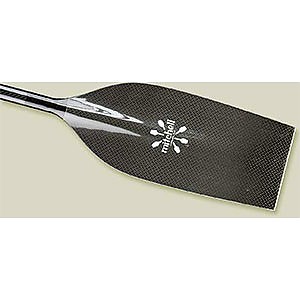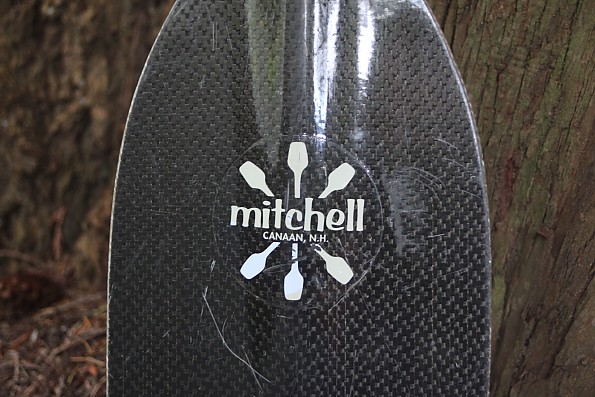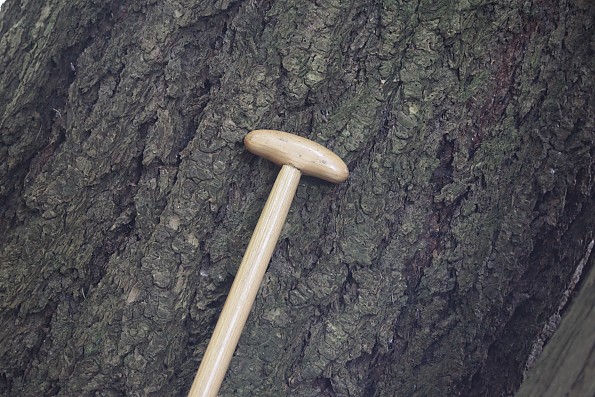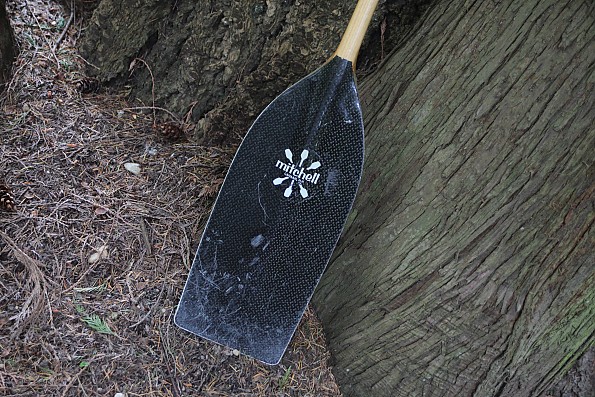Mitchell Paddles Premier

Many people spend thousands of dollars on a canoe or kayak, but go cheap when choosing something equally important...their paddle. If you are looking for a great performing white water canoe paddle, Mitchell Paddles makes the Premier using wood, fiberglass and carbon fiber. These paddles are very well made for paddlers, by paddlers. They are stiff, and heavier than lighter duty paddles, but will last more years than others.
Pros
- Extremely stiff
- Metal tip and fiberglass edging protects blade
- Oval shaft and countered T-grip is comfortable
Cons
- Heavy compared to lighter duty paddles
- Moderate to high price
Background:
David Mitchell started whitewater slalom racing in the early 1960s. He was British National Champion for 8 years, and achieved both bronze and silver medals in the World Championships. After he retired from racing, he continued to coach. With his wife, Peggy, also a canoe racer, he founded Mitchell Paddles more than thirty years ago. Today, their son Peter continues to handcraft some of the world’s finest canoe and kayak paddles in New Hampshire.
My first whitewater paddles were Mohawk paddles. They had a T-grip, important for white water work, and they were relatively light with aluminum shafts and plastic blades. They didn’t cost much, but the round shafts and simple plastic grips were not very comfortable. Add to that the plastic blades were made for inexpensive manufacturing, not for moving water efficiently.
Then I had a chance to try a Kober wood composite spoon blade paddle. These were the hot thing in the 1960’s. I liked the metal tip of the Kober, but the weight stopped me from buying a new one. A member of my canoe club, a very experienced paddler, let me try his Mitchell Premier. It was much lighter than the Kober, but had a short wide blade, perfect for shallow water work, and the metal tip I knew would keep it durable.
The Premier was developed for the 1989 World Championships and that race bred design shows in available specifications. The Premier comes in different lengths as you would expect, but it also can be had in different configurations, so you can customize your paddle to suit your paddling preferences. Buyers can choose between a flat or a curved blade. The blades are wood cores reinforced with a carbon fiber or a fiberglass outer layer. An aluminum tip and fiberglass rope edging completes the blade. Shafts can be either wood or carbon fiber, with a fiberglass sleeve available for the wood shaft. And grips can be either contoured or dowel shaped depending on your preference.
Initial Impression:
In my case, the Premier configuration I chose was a carbon wrapped blade and a wood shaft with a contoured T-grip.
Since the carbon blade and metal tip have little “give”, I wanted the wood shaft to absorb some shock contacting rocks when running boney creeks and rivers. Paddle length is not some formula that is easily determined. First, it is the shaft length that really matters, as blade length between different paddle designs varies widely. In a white water paddle, a balance has to be maintained between choosing a longer blade for more powerful braces, and for being able to easily perform cross strokes in tight situations.
Holding the Mitchell, what first impresses is the high quality. There are no sharp edges and the oval shaft and contoured T-grip fits the hand well. The carbon fiber on the blade may exhibit small pin head sized voids, but this does not affect performance or durability. While I have heard this as a complaint, the voids occur in manufacturing and are the result of the hand crafting process and the need to reduce resin to keep the weight as low as possible.
The aluminum tip is well attached to the blade, a better system than the exposed rivets the Kober paddles employ.
In The Bush:
My first experience with the Mitchell Premier was night and day above what I had experienced with my Mohawk. I paddle a Mad River Outrage X, an older one, so it is a heavy boat. In spring in the Northwest, rivers are often more substantial than the shallow creeks and rivers of the East and Mid-West. Spring levels often exceed 2000 cfs on local rivers in moderate flows. Rapids are frequently long and wood is a common hazard, so the importance of being able to power out of a risky situation is prime.
The Mitchell blade shape grabs a lot of water which is important in those, “Oh, sXXt” situations. The ability to move my boat quickly is a real benefit when trying to attain a surf wave. Before, I was sometimes left breathless trying to get on a wave, and now it often takes just a few strokes to get there. A substantial blade is also important when bracing, as it helps to avoid that swim that you don’t want to take, or the roll you’re not sure you can do. The very stiff construction of the Mitchell means that there is little energy lost at the catch and throughout the stroke. This lack of flex is a positive for paddling but can be fatiguing on long runs.
The only negative with the Mitchell, is its weight. My son paddles with a Werner Nantahala, and my girlfriend paddles with a Grey Owl Hammerhead. While the Werner is more like the shape of the Mohawks, the Hammerhead is more similar to the Mitchell. The Mitchell is heavier than either, though it does have more blade area. A caveat here, is that if I had chosen the carbon shaft, my paddle would be lighter.
Mitchell Premier Specifications:
- Weight: 23oz – 28oz
- Lengths: 54", 56", 58", 60", 62"
- Blade size: 20 × 8″
- Grip: Standard T-grip or Dowel Grip
- Blade material: Aluminum tip, fiberglass rope edged and a wood core covered with either fiberglass or carbon fiber
- Shaft material: Carbon fiber or wood
My Experience
Since the early 1960s I have hiked, climbed, skied and paddled over much of the Northwestern part of North America. In the early 1990s I retired from more extreme mountaineering and now spend a large portion of each year canoeing Canada’s Far North.
Source: bought it new
Price Paid: $200
Your Review
Where to Buy
You May Like
Specs
| Price |
Reviewers Paid: $200.00 |
| Lengths |
54 - 62 in @ 2 inch increments |
| Grips |
Standard T-grip |




